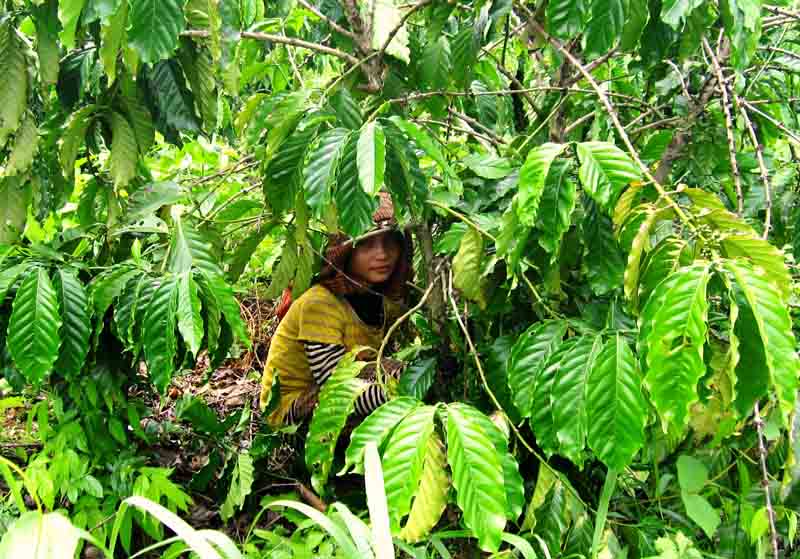There’s no denying it: Phnom Penhites just want to get high. At this very moment in the city’s most salubrious neighbourhoods people are clamouring for hits from the bong faster than the poor bongs can keep up, and the only high worth chasing is of the caffeinated variety. With the approximately two square miles of BKK1 now overloaded with ‘Western-style’ coffee shops, most coffee drinkers, Cambodian as well as expat, seem to be eschewing the traditional brew in favour of frappuccinos, free wifi and, God save us all, endless Michael Buble ear-assaults. The real Cambodian cup of coffee seems in danger of disappearing into this vortex of naff.
For although it can in no way claim the fame of its drippy Vietnamese neighbour, nor indeed the notoriety of that same nation’s ‘weasel coffee’, Cambodia does indeed have a national brew, grown on the red earth of the North Eastern provinces, roasted and enjoyed in its own unique fashion throughout the Kingdom.
Introduced during the French era alongside those two other Cs, croissants and colonialism, the coffee grown in Cambodia is mainly of the ‘Robusta’ variety, which is in flavour somewhat robuster (ba-boom! I’m here all week, folks) than the more highly prized Arabica. These days, according to Phnom Penh-based roasters Three Corner Coffee, around 70% of beans grown on Cambodian soil end up in the hands of Vietnamese middle-men, whence they are sold across the border and used to bulk up Vietnamese produce.
Luckily, some coffee contrives to remain in-country, ensuring you can find the authentic cup of Khmer coffee if you’re willing to try hard enough. Keep your eyes peeled as dawn breaks and you’ll see tin drums full of steadily blackening beans lining the roadside, with the occasional lump of pig fat bobbling merrily in the mix. Once charred, the beans are hand-ground into fine dust and then poured into the glamorously named ‘coffee sock’, a muslin bag through which boiled water is poured up to three times. The coffee is then ready to pour over the requisite spoonage of condensed milk. For Cambodian coffee can be taken hot or iced, but only a madman takes it without a dollop of My Boy milk; no questions asked, it’s just the way it is.
Curiously, in that very heartland of pseudo-European coffee-shops, BKK1, there exist two mom and pop places defiantly roasting and boiling their own coffee. You have to get up early to catch Mr Dol on Street 51 and 322, whose blue plastic chairs and floral tables unfold with the dawn and whose roasting is done while most of us are still abed. His syrupy 2,000 riel shots come with free Chinese tea and your choice of pork and rice or, well, pork and rice. A little further south working the corners of BKK market there’s Mrs Nuon, who runs a one-woman mobile operation that roasts, grinds, boils and serves all at once, with never a cessation in conversation from clientele or proprietress.
Further afield, a morning cruise round the streets south of Toul Tom Pong market allows you to follow your nose to places that are roasting their own. Should this fail-safe method fail, head for the hole-in-the-wall cafe at the intersection of streets 432 and 163, where roasting pig fat and free-flow condensed milk never smelled so good. And if you’re not an early-riser there’s always Mr Bounnareth’s coffee stall inside the market itself, identifiable by its inexplicable Brazilian flags and jovial owner. While Mr Bounnareth undeniably serves up a deliciously thick and strong double shot for only a dollar, be warned: he and his establishment are teetering on the brink of self-parody. Catch him and his coffee before tradition becomes farce and you have to contend with hordes of snap-happy tourists just to get your iced coffee.
Mr Dol, Street 51 (cnr Street 322)
Mrs Nuon, mobile coffee cart, BKK Market
Cafe, Street 432 (cnr Street 163)
Mrs Bounnareth’s stall, Russian Market
